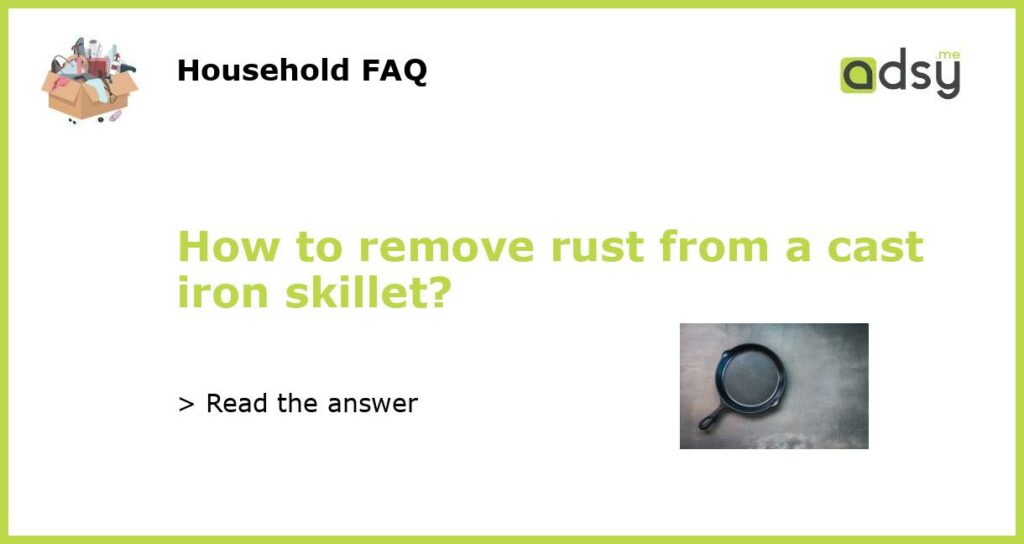Why is Rust a Problem on Cast Iron Skillets?
Cast iron skillets are a popular cooking utensil that is cherished for their durability and heat retention capabilities. However, one common issue that can arise with cast iron skillets is rust. Rust can develop on the surface of the skillet when it is exposed to moisture and not properly cared for. Not only does rust make the skillet look unattractive, but it can also affect the flavor of the food and potentially cause health concerns. Therefore, it is important to know how to remove rust from a cast iron skillet to restore its usability and maintain its longevity.
Method 1: Scrubbing with Salt and Oil
One effective method to remove rust from a cast iron skillet is to scrub it with salt and oil. Start by heating the skillet on the stovetop to open up the pores of the metal. Once the skillet is warm, pour a generous amount of salt onto the surface. Use a scrub brush or a cloth to vigorously scrub the rusted areas. The salt acts as an abrasive that helps remove the rust. After scrubbing, rinse the skillet with warm water and dry it thoroughly. To prevent future rust, apply a thin layer of vegetable oil to the skillet and heat it on the stovetop until the oil starts to smoke. This forms a protective barrier on the skillet’s surface.
Method 2: Soaking in Vinegar
Vinegar is another excellent household item that can be used to remove rust from a cast iron skillet. Fill a basin or sink with equal parts of white vinegar and water. Submerge the rusted skillet in the vinegar solution and let it soak for a few hours or overnight. The vinegar works to dissolve the rust, making it easier to scrub off. After soaking, scrub the skillet with a scrub brush or a cloth to remove any remaining rust. Rinse the skillet with warm water and dry it thoroughly. To ensure no residue is left, it is recommended to season the skillet with a light layer of oil.
Method 3: Using a Potato and Baking Soda
If you prefer a natural approach to removing rust from your cast iron skillet, you can use a potato and baking soda. Cut a potato in half and dip the cut side into baking soda, creating a paste-like mixture. Rub the potato onto the rusted areas of the skillet, applying gentle pressure. The oxalic acid in the potato combined with the abrasive properties of the baking soda will help lift and remove the rust. After scrubbing, rinse the skillet with warm water and dry it thoroughly. Apply a light coat of oil to protect the skillet from future rust.
Method 4: Electrolysis
For heavily rusted cast iron skillets, electrolysis can be an effective and efficient method to remove rust. This method involves creating an electrolyte solution and passing an electric current through the skillet. This process causes the rust to convert back to iron, leaving the skillet clean and ready for seasoning. While electrolysis requires some additional equipment and precautions, it is a highly recommended method for restoring heavily rusted cast iron skillets. For detailed instructions on how to perform electrolysis, consult reliable online resources or seek guidance from experts.
Maintaining a Rust-Free Cast Iron Skillet
Preventing rust from forming on a cast iron skillet is essential in maintaining its longevity. After each use, wash the skillet with hot water and a scrub brush. Avoid using soap as it can strip away the seasoning. Thoroughly dry the skillet before storing it to prevent moisture from accumulating. If you notice any signs of rust, promptly address the issue using the methods mentioned above. Lastly, regularly season your cast iron skillet by applying a thin layer of oil and heating it until the oil smokes. This will help create a protective barrier and keep your skillet rust-free.






